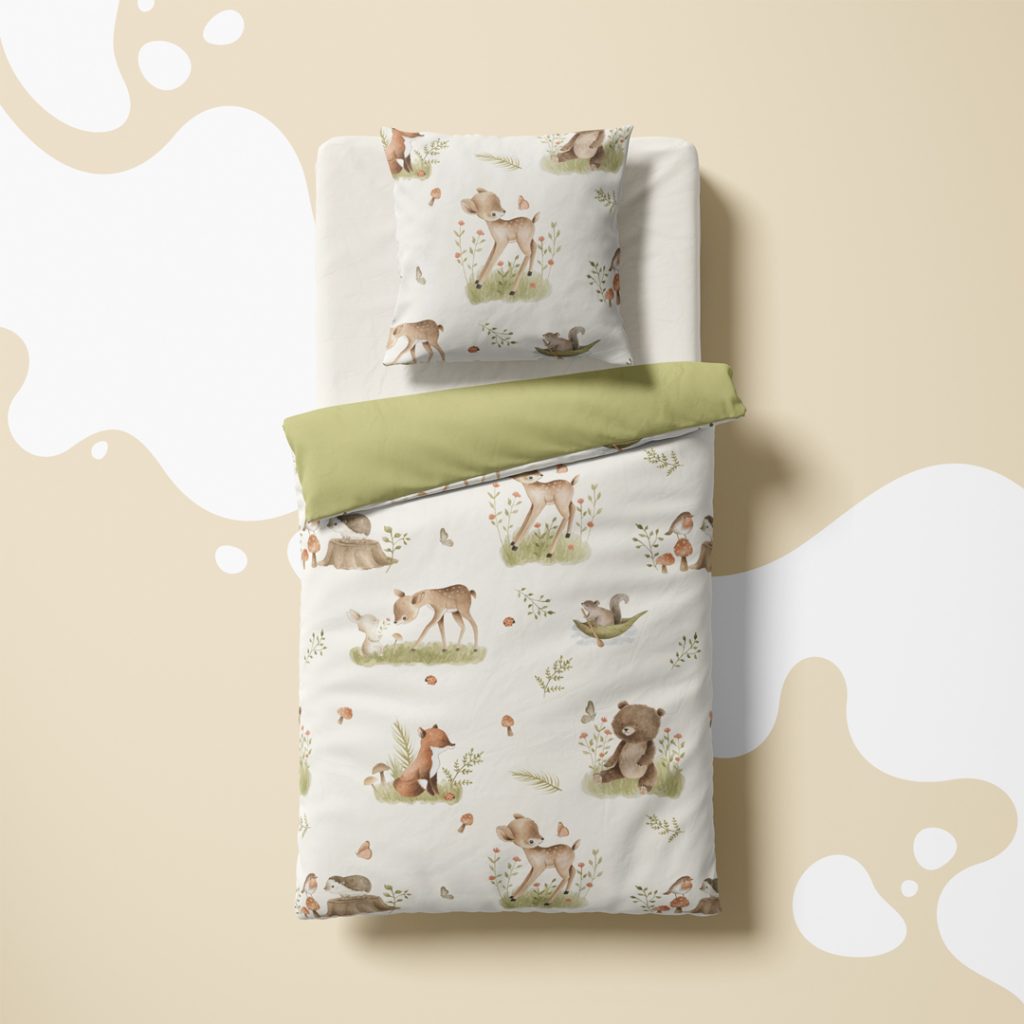Satin is an extraordinary fabric that has delighted with its luxurious appearance and unparalleled comfort for centuries. It is characterized by a smooth, shiny surface and a delicate texture, making it highly valued in many areas of life. However, its popularity stems from aesthetics and its wide range of uses and beneficial properties. In this article, we will take a closer look at satin – its types, properties, applications, and ways to care for products made from this exceptional fabric.
Table of Contents
- What type of fabric is satin?
- Is satin a natural fabric?
- Satin – fabric properties
- Applications of satin – what is this fabric used for?
- How to care for satin products?
What type of fabric is satin?
Satin is a type of fabric characterized by a specific type of weave. It is a satin weave, in which the warp yarns float over the weft yarns, creating a smooth and shiny surface. However, what makes satin so diverse and versatile?
Satin can be made from various materials, which influences its properties, appearance, and applications. One of the most used materials for satin production is cotton. Cotton satin is soft, durable, and breathable, making it an excellent choice for sewing clothing and bedding. It is also a more environmentally friendly option, which may be important for those concerned about the environment.
Another popular material for satin production is silk. Silk satin has an exceptionally delicate texture and beautiful luster, making it a luxurious choice for elegant clothing and high-quality bedding. Silk satin is also cool to the touch and perfect for hot summer nights.
On the other hand, polyester satin is often used in the production of inexpensive and practical products due to its durability and ease of maintenance. It is also a more affordable option, making it a popular choice for everyday clothing and household items.

Is satin a natural fabric?
Yes, satin can be made from natural materials, making it a natural fabric. One of the most used natural materials for satin production is cotton. Cotton satin is characterized by a soft, pleasant texture and excellent breathability. This is an important feature, especially when it comes to clothing or bedding that has direct contact with the skin. Another natural material used in satin production is silk.
Using natural raw materials for satin production has many advantages. In addition to adding additional breathability and delicacy to the fabric, natural fibers may be more skin-friendly, especially for people with sensitive skin or allergies. Additionally, natural materials are often more environmentally friendly, which may be important for environmentally conscious individuals.
Satin – fabric properties
Satin is a fabric with many beneficial properties that make it popular in many areas of life. Here are a few main characteristics of this fabric:
- Smooth, delicate surface: Satin is characterized by an exceptionally smooth and delicate surface, which is pleasant to the touch. This soft texture makes the fabric luxurious and comfortable to wear.
- Breathability: Satin, especially that made from natural materials like cotton or silk, is very breathable. This allows for free airflow, making it ideal for clothing and bedding, especially on warm days.
- Hypoallergenic: Satin made from natural fibers has hypoallergenic properties. This is an important feature for people with sensitive skin or allergies, as the fabric does not cause irritation or allergic reactions.
- Durability: Despite its delicate texture, satin is also durable and resistant to damage. It is a fabric that maintains its quality even after multiple washes and uses.
- Ease of cleaning: Satin is easy to clean. It can be washed by hand or machine. Additionally, it dries quickly, making it convenient to care for.
- Comfortable sleep: Satin is an excellent choice for bedding. Thanks to its delicacy and breathability, it provides comfortable sleep.
- Elegant shine: Satin stands out with its elegant shine, giving clothes and other products a luxurious appearance.
Applications of satin – what is this fabric used for?
Satin is a fabric with a wide range of applications, making it popular in many fields. Here are a few main areas where this fabric is used:
- Fashion: Satin is commonly used in elegant women’s clothing production, including evening dresses, skirts, shirts, blouses, and suits. Its smooth surface and elegant shine give garments a luxurious look, making them perfect for special occasions and daily styling.
- Lingerie: Satin is also a popular material for making women’s lingerie and nightwear, such as pajamas, nightshirts, robes, or panties. Its delicacy, softness, and elegance make satin lingerie not only comfortable but also visually appealing.
- Decorations: Satin is often used in the production of various decorations, such as scarves, ties, bows, decorative pillows, or tablecloths. Its elegant shine and smooth texture add charm and sophistication to any room or event.
- Bedding: Satin is a popular choice for bedding, especially that made from natural fibers such as cotton or silk. Satin bedding is not only elegant and luxurious but also comfortable and pleasant to the touch, enhancing sleep comfort.
- Children’s products: Satin is also used in producing various children’s products, such as children’s bedding, blankets, clothing, or stroller accessories. Its delicacy and softness make it an excellent choice for the delicate skin of babies and young children.
- Interior accessories: Satin is also used in producing various interior accessories, such as curtains, drapes, tablecloths, runners, or decorative pillows. Its elegant appearance and durability make it an excellent fabric for adding charm and style to any room.

How to care for satin products?
Taking care of satin products is important to maintain their beautiful appearance and durability for many years. Here are a few tips for caring for satin products:
- Washing: Wash at a temperature below 40°C, using a special program for delicate fabrics, preferably with a detergent that does not contain phosphates. Hand washing satin products, especially those made from delicate materials like silk, is also a good solution.
- Gentle detergents: Use gentle detergents intended for delicate fabrics when washing satin products, such as baby laundry detergents or special detergents for satin.
- Drying: After washing satin products, avoid drying them in a tumble dryer, as high temperatures can damage the fabric. Instead, dry them flat to avoid deformation.
- Ironing: Satin should be ironed at low temperatures, using appropriate settings on the iron. For silk satin, it is recommended to iron from the inside to avoid damaging delicate fibers.
- Protection against damage: Store satin products in a way that protects them from damage, such as abrasions or creases. They can be stored in soft bags or drawers to prevent mechanical damage.
By caring for satin products according to the above guidelines, you can maintain their beautiful appearance and durability for many years. Remember that proper care is key to keeping satin in excellent condition and enjoying its luxurious appearance and comfort for a long time.
Satin is a fabric that remains at the top of popularity due to its elegance, comfort, and versatility. Its smooth surface, softness, and unique shine make it indispensable in many areas of life, from fashion to interior design. With proper care, satin products maintain their beautiful appearance and durability for many years, providing users with pleasure and satisfaction. Therefore, it is worth appreciating this exceptional fabric and enjoying its benefits in everyday life.





